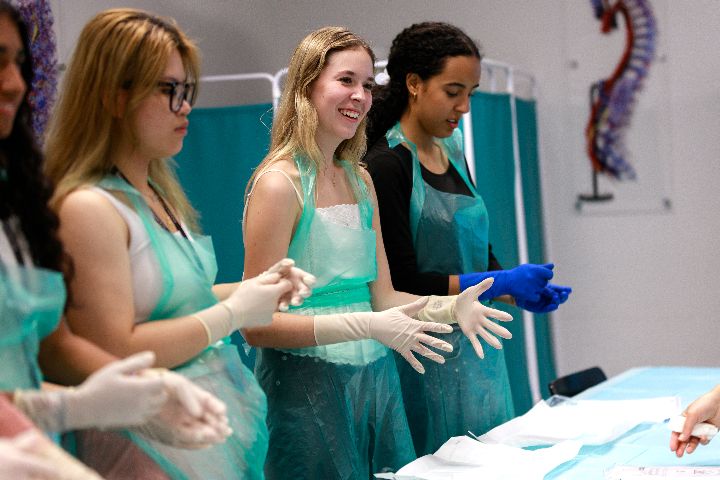Getting a good score on your SATs is crucial if you want to go to college in the US. But how do you prepare for your SATs? How can you ensure you pass your SATs with flying colours? In this blog, we outline some crucial tips on how to prepare for SATs in the 9th grade and up. Read up on our top 5 tips on preparing for SATs to learn how to study effectively for this exam.
Top Tip 1: Know what to expect on your SATs

The first of our top 5 tips on preparing for SATs is to check your understanding of what to expect during the process. The SAT has 3 mandatory sections that you must complete and one optional section. These are:
1. A mathematics test (Duration: 1 hour 20 minutes)
2. A reading test (Duration: 1 hour 5 minutes)
3. A writing and language test (Duration: 35 minutes)
Altogether, these mandatory sections of the SAT amount to 3 hours of testing.
For the optional part of the examination, you can write an essay. Certain US colleges require that you complete this section of the SAT, so be sure to check your college application requirements early on. If you’re not yet decided on your chosen college then we recommend that you complete the essay anyway – just in case.
You will have 50 minutes to complete the essay and it will consist of:
- Reading a passage of text
- Writing an analysis about what you’ve read
The goal of this part of the essay is to demonstrate:
- Effective writing skills
- The ability to critically analyse
- Comprehension and understanding
The SAT is designed to ensure you have the skills and knowledge required for college learning. It’s not just about how well you can simply recall facts and information. You will score much better on the SATs if you provide a personal and informed response than if you were to simply repeat information on a topic.
In the mandatory sections of the SATs, you will be required to evaluate and analyze questions and then find solutions to the problems presented. These will form the basis for your answers.
There are seven different SAT dates each year, these are usually October, November, December, January, March, May and June.
Once you have received your results you can retake your SAT test at a future date. Sometimes it’s a good option to do this if you want to improve your score.
Top Tip 2: Understand the SAT score calculator
Most US colleges use your overall SAT score to evaluate your suitability for their institute and the programme you have chosen to study. The score can range between 400-1,600 points.
You’ll also receive a breakdown of the scores you receive on each section and sub-section of the test, as well as comparison scores to other students in your state and to all students who took the same SAT exam.
You can assess all your scores online at CollegeBoard.org via your online college board account.
It’s important to make sure you know the minimum score required by your chosen colleges in order to accept you onto their course.
Once you have this figure, you can take steps to achieve this target. It’s a great starting point to know exactly what you’re aiming for.
Tip 3: Start Your SAT maths practice
During one of the two compulsory math sections on the SAT, you will not be able to use a calculator. You can prepare for this section of the test by practising mental math leading up to the test date.
You will have a better chance of succeeding on this section of the test and saving time if you’re able to quickly calculate in your head. If your textbooks aren’t cutting it for you, try out an online course such as Khan Academy, see if an older student or teacher can provide some one-on-one tutoring, or explore apps like Quizlet that offer interactive ways to strengthen your mental math skills.
Top Tip 4: Get into SAT grammar practice
Almost half of the verbal section in the SAT test is made up of grammar questions.
Many of these questions are associated with general essay questions, while others rely on you showcasing your basic understanding of grammar and English language conventions.
We recommend that you brush up on basic English grammar skills leading up to the test. As with your maths skills, choose a method that works for your learning style.
Top Tip 5: Don’t neglect SAT reading practice!
The SAT test features a lot of reading, including five dense passages one after the other. We highly recommend improving your reading skills by reading as frequently as possible. Studies show that students who read for a minimum of twenty minutes a day do far better on tests like the SAT.
As four out of five passages on the SAT will be non-fiction, we recommend grabbing a newspaper, online article or magazine to prepare for this part.
On top of this, it’s probably worth engaging with official SAT practice tests and passages. This will help you get used to the types of question asked. For example, you could practice finding details within a passage to support an evidence-based question. Timing is crucial, so practice under timed conditions to ensure you can manage the section effectively.
You can use various resources to do this, such as official practice books like the College Board’s SAT Study Guide, online platforms like Khan Academy, apps for reading comprehension and vocabulary building, podcasts discussing test strategies, and videos that break down question types and techniques.
No matter how you choose to prepare, the earlier the better!
Conclusion
As we have covered over the course of our top 5 tips on preparing for SATs, great preparation comes down to practising for specific test areas as well as understanding the test process. If you’re a student preparing for SATs but wondering what to do after high school, check out our summer Academic Insights programmes or Online Research Programmes. They’ll allow you to experience university-level study on campus at prestigious locations across the world. That means that once you have aced your SATs, you’ll know exactly what you want to do next.




